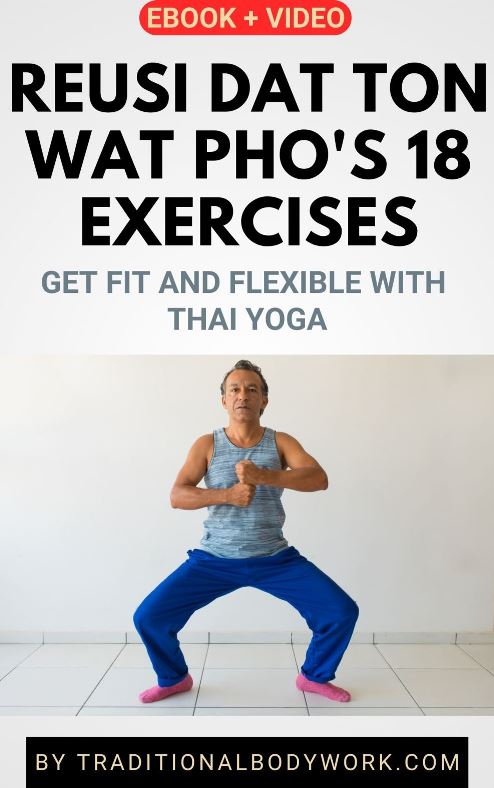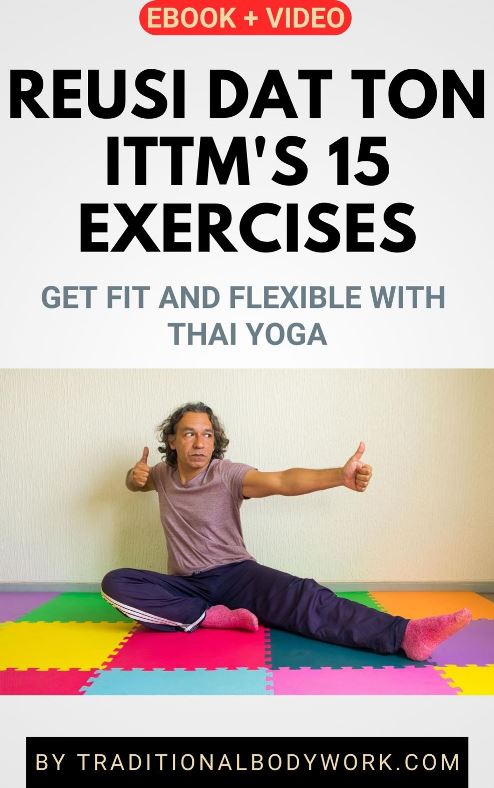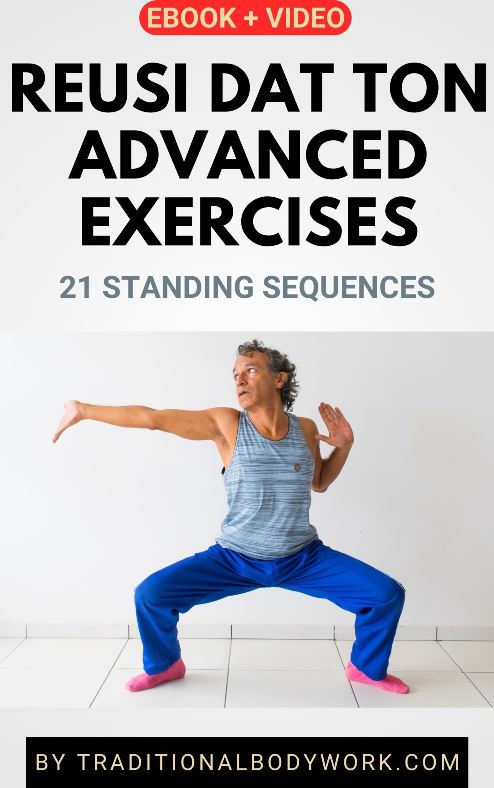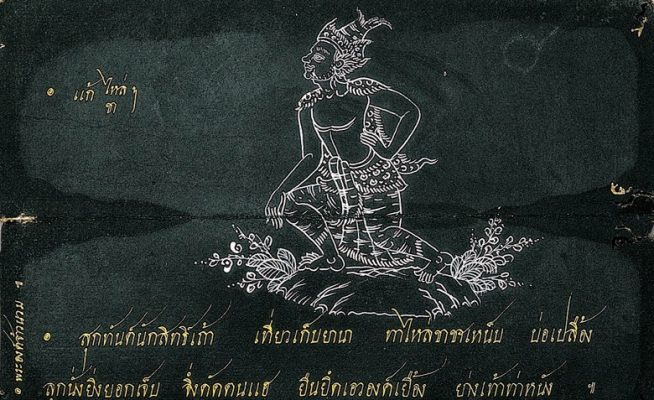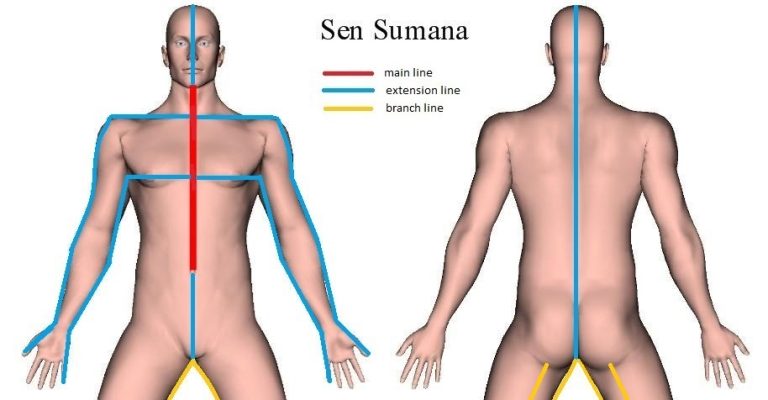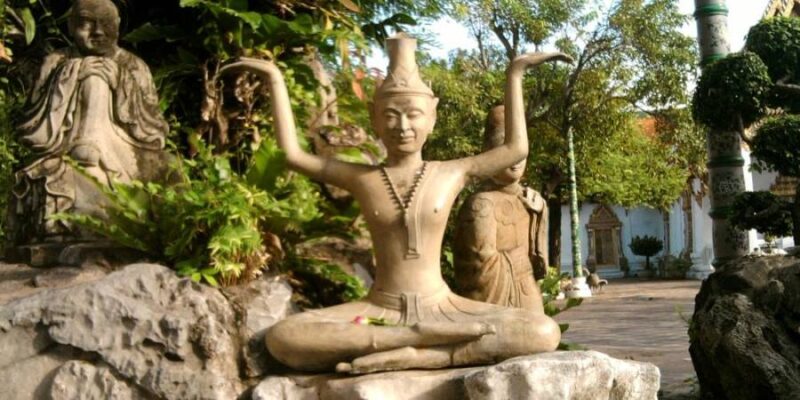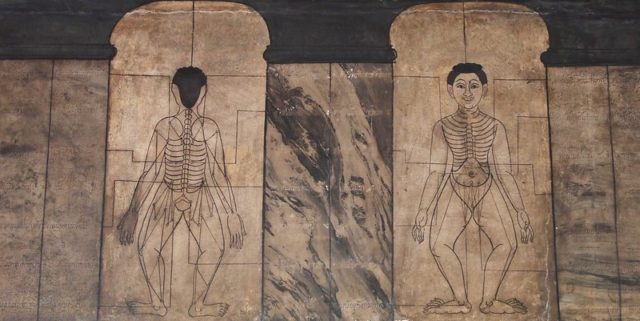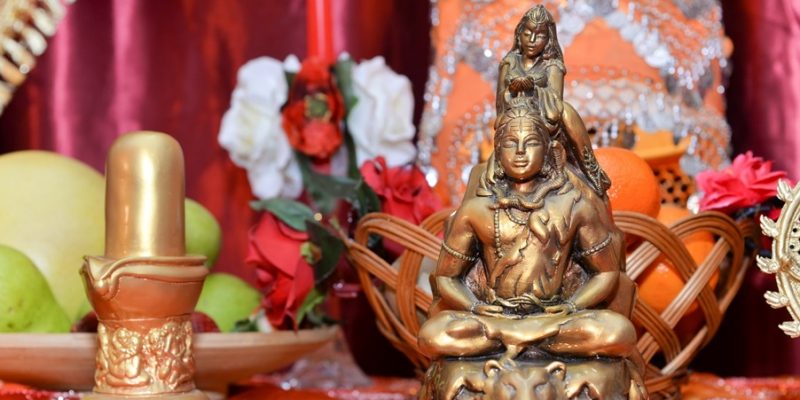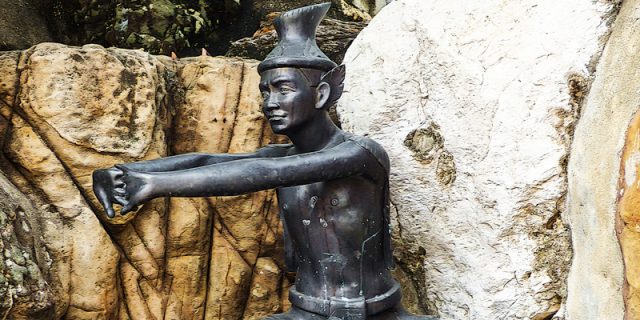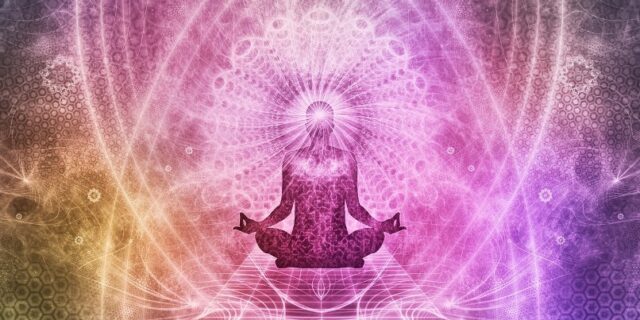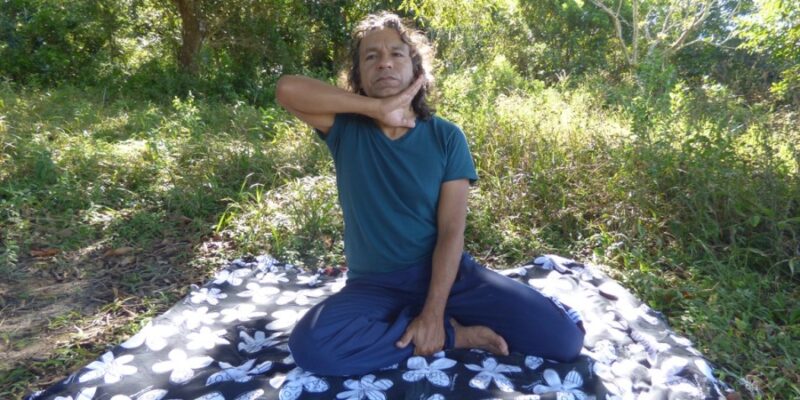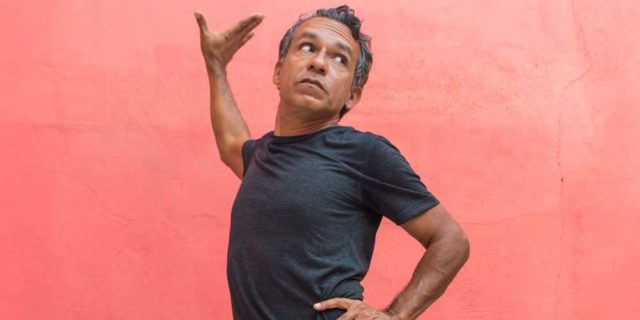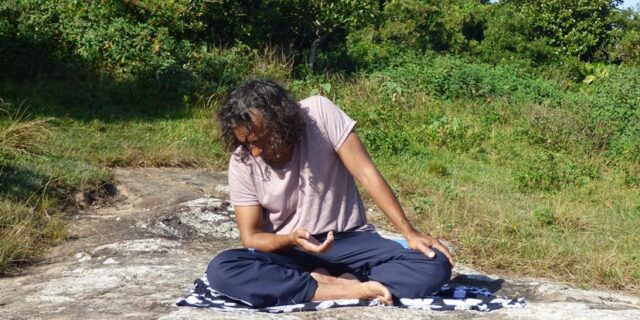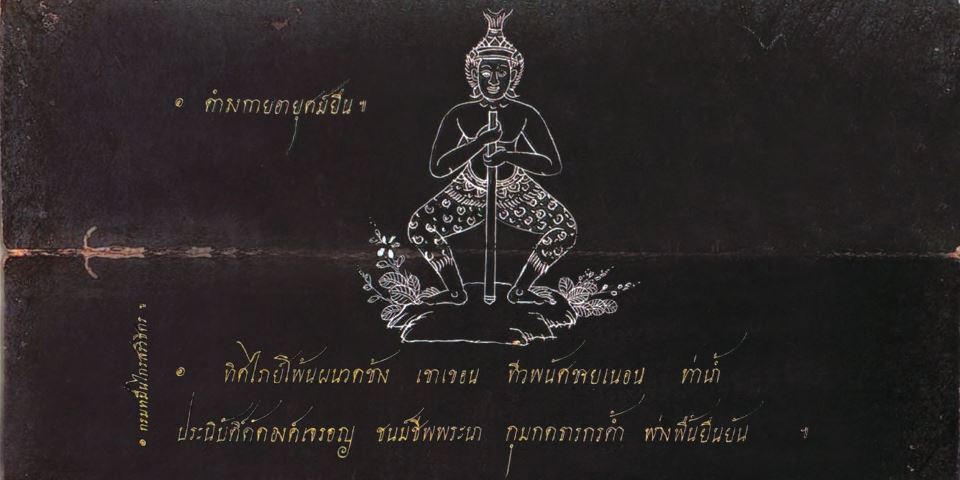
The Reusi Dat Ton Longevity Exercise is a famous and important exercise in Reusi Dat Ton (Thai Yoga), and appears in both the 15 Basic Positions of the Contorted Hermit (ITTM) and the 18 Wat Pho Rue-Si Datton Ascetic Self-Stretching Exercises.
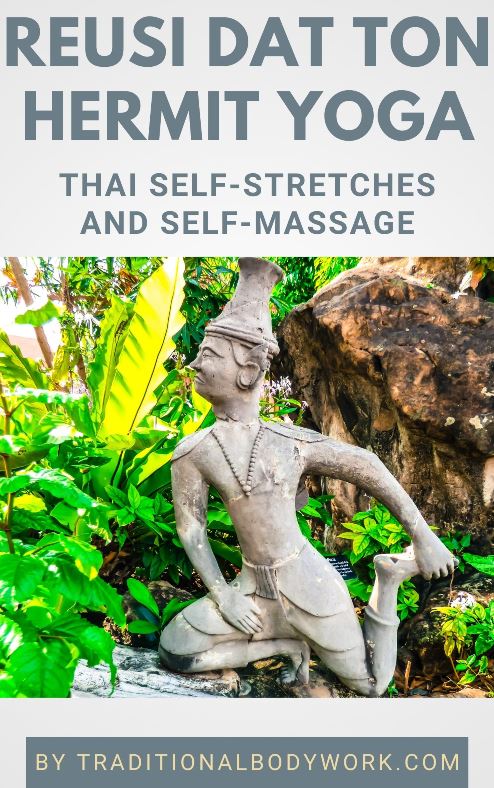
As it is, we’ve already written a post about this exercise in which we explain how to perform it and where we rather focus on the physical health benefits. You can read more about that in Thai Yoga Reusi Dat Ton Exercise For Longevity.
However, in the current article we’re going to look at the hidden (esoteric) i.e. secret and spiritual meaning of the staff (stick or pole) the Reusi Hermit is holding in his hands, and is using as a help to perform this exercise.
The classical drawing depicted as the lead image of this post can be found as Illustration 24 in the Samut Thai Khao, an ancient manuscript dating from 1838 that contains 80 Reusi Datton drawings with accompanying descriptions and poems. The famous 80 Ruesi Datton statues in the Wat Po temple garden are sculpted according to these drawings.
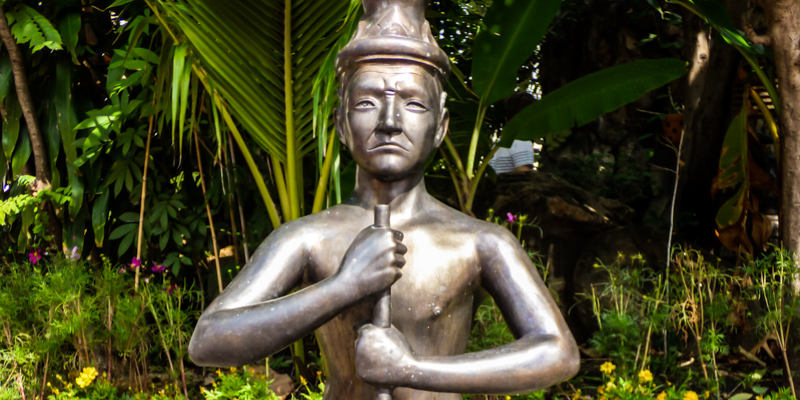
In any case, the accompanying poem for the Longevity Exercise — according to the Samut Thai Khao manuscript — goes like this: “Hermit Thiphai has been ordained near a riverbank, close to hill in the forest. He practices this exercise to increase his longevity, holding a baton in his hands and pressing it down to the ground.”
It’s one of the few Reusi Dat Ton exercises that makes use of an implement, in this case a baton i.e. a stick. This stick is of great symbolic importance, a fact rarely recognized. In fact, the Indian Sanskrit word for “staff,” “rod,” or “stick” is “Danda” which in Sanskrit is also used to refer to “The scepter of a king, the rod as a symbol of authority and punishment,” “The staff given to a twice-born man” (a spiritually awakened one), or “The staff of an ascetic.”
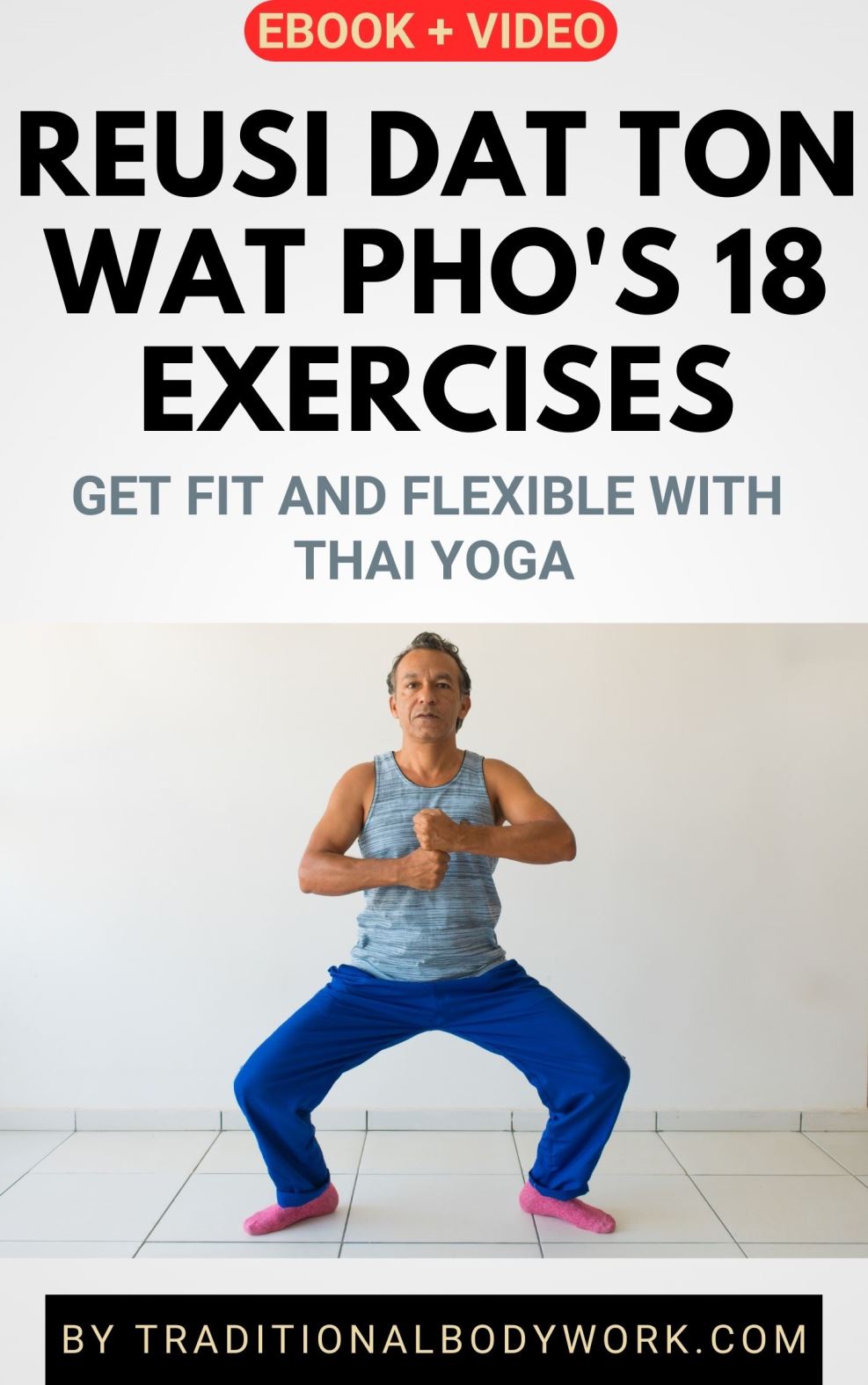
The Danda is one of the traditional tools or implements of the Indian ascetic i.e. the Sadhu, Samnyasi, or Rishi, who in Thailand is called the Reusi Hermit. It’s also an external interpretation and visualization of Sushumna Nadi, the most important central Yoga Prana Channel (Nadi) in the body (with its trajectory along the spine), which is called Sen Sumana in Thai Massage and Thai Yoga (Reusi Datton).
It’s significant that the accompanying poem for this exercise states ” … He practices this exercise to increase his longevity, holding a baton in his hands and pressing it down to the ground.” This clearly represents an act of “earthing,” that is, “getting rooted” or “connecting to the roots,” which could be interpreted as making a connection with the Muladhara Chakra (also called the Root Chakra).
Muladhara, located near the coccyx, associated with the Earth element, and representing our ability to stand firmly grounded in life, is thought to be the Chakra in which Kundalini Awakening starts, which can be channeled upwards through the other Chakras, along the spine and Sushumna Nadi, up to the Crown Chakra, resulting in Spiritual Awakening, Enlightenment, Bliss, and Eternal Life (i.e. Longevity).
Today, Reusi Dat Ton practitioners will seldom use a staff (Danda) to do this exercise, put simply put two fists on top of each other. Nevertheless, performing it with a stick, while engaging in Tummo Breathing and pelvic floor muscles contraction, building a visualized and actually felt “fire in the Kanda” (Kanda – region in the center belly area), and visualizing the heat and Prana going up the spine (along Sen Sumana) to the top of the head, well — that creates a whole other experience when performing this exercise. Just try it.


